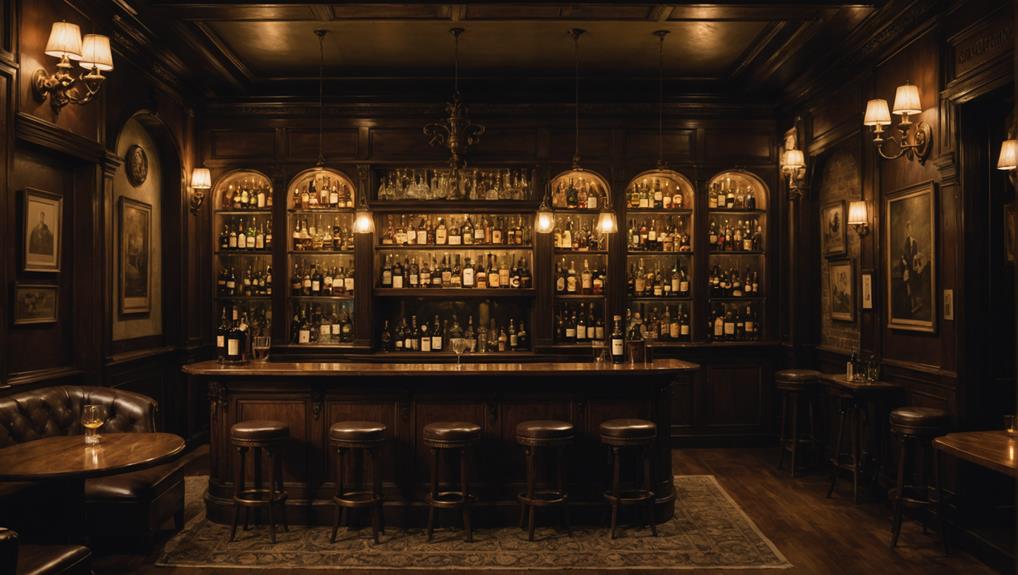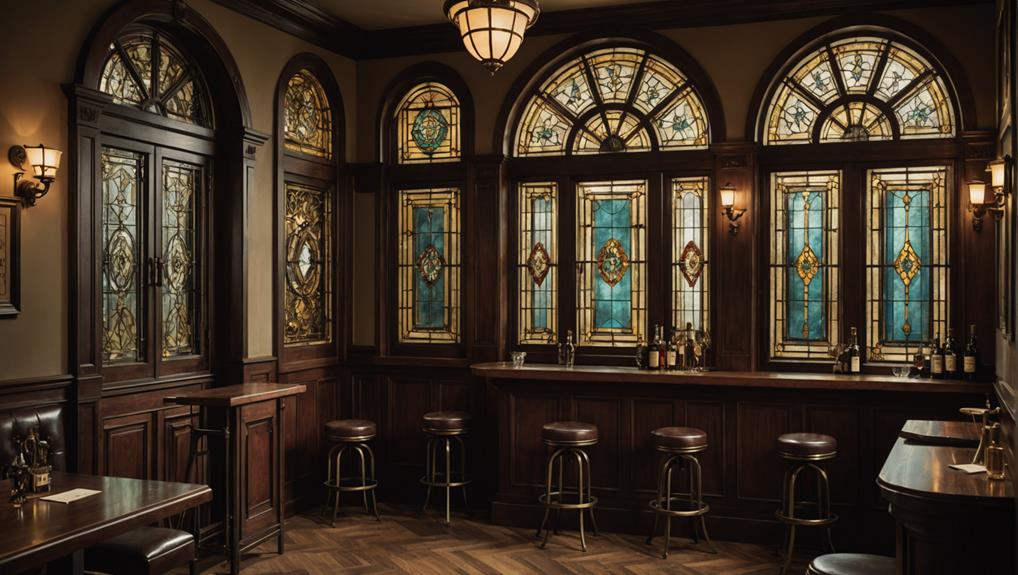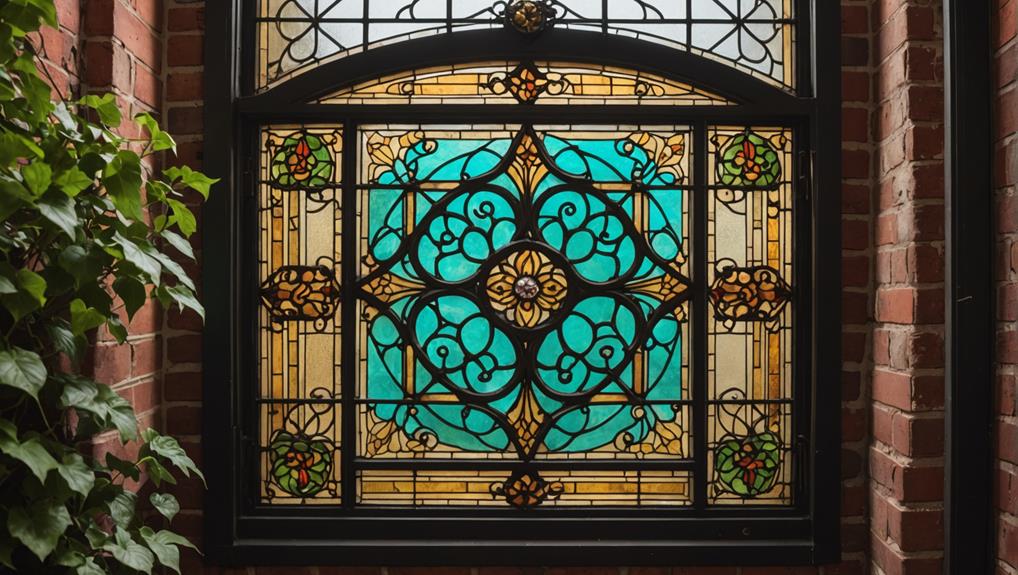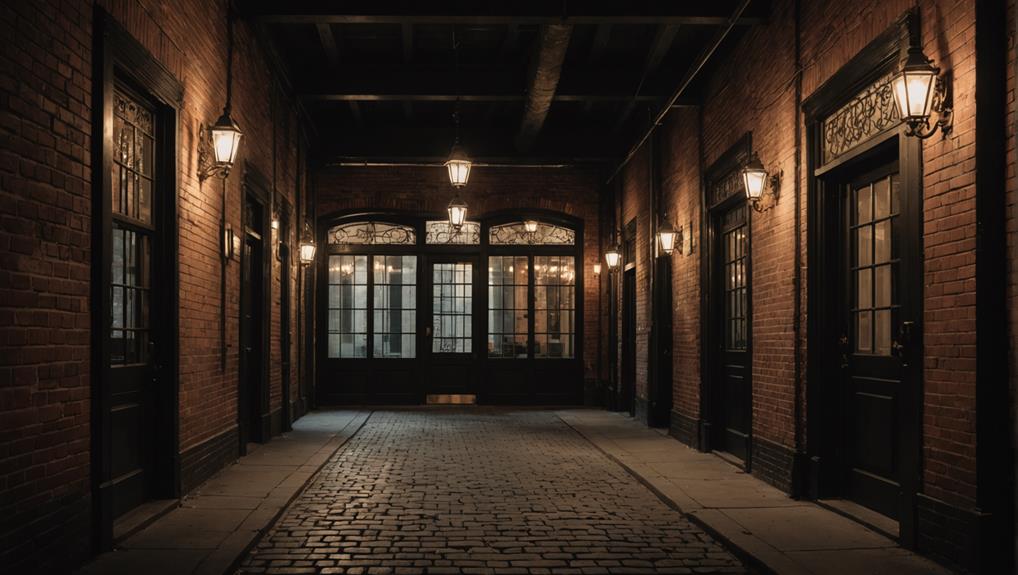Table of Contents
Speakeasy windows are fascinating architectural features that combine secrecy and style. They originated during Prohibition, serving as hidden entrances to underground bars. You’ll often find their discreet designs seamlessly blending with the surrounding architecture, making them difficult to spot. Key elements of these windows include intricate grills, frosted glass for privacy, and a strategic waist-height positioning for easy access.
Modern versions of speakeasy windows continue to embody this charm while enhancing both homes and businesses with their hidden allure. With a perfect balance of functionality and aesthetics, these windows stand out in contemporary architecture. If you’re curious about their impact on urban design, there is much more to explore.
Historical Origins of Speakeasy Windows

Speakeasy windows emerged during Prohibition in the 1920s as secretive entrances that allowed patrons to sneak into hidden bars and clubs. These covert access points became essential for those seeking a social gathering away from the prying eyes of law enforcement. As you step into this era, you’ll find that these windows weren’t just about access; they symbolized a cultural rebellion against restrictive laws.
In a time when alcohol was illegal, urban legends grew around these hidden access points. Stories of daring escapes and clever disguises filled the air, enchanting those enthusiastic to partake in the clandestine nightlife. The allure of the speakeasy was tied to its secret entrances, where whispers and laughter echoed through dimly lit rooms, fostering a sense of community among patrons.
Moreover, these windows served as cultural symbolism, representing the defiance of societal norms. You can almost picture the excitement as people huddled together, sharing drinks and stories, all while maneuvering the dangers of the Prohibition Era.
Speakeasy windows became more than mere features; they were gateways to a vibrant underground culture that thrived despite the law.
Key Construction Techniques
During the construction of speakeasy windows, builders often prioritized discreet designs that blended seamlessly with the surrounding architecture. They understood the importance of creating hidden entrances that wouldn’t draw attention. To achieve this, they utilized clever construction techniques, like incorporating the windows into existing structures or disguising them with decorative elements.
You’d notice that many speakeasy windows featured intricate grills or elaborate designs, making them appear like ordinary architectural features. This way, they provided clandestine access without compromising the aesthetic of the building. Builders often employed double-hung or sliding window designs that could be easily opened and closed, allowing for swift transactions or entrances.
Moreover, they paid close attention to the placement of these windows. Positioning them at waist height made it easier to interact with patrons while keeping the operation under wraps. The goal was always to maintain a low profile while ensuring functionality.
Essential Materials Used

When choosing materials for your speakeasy windows, you’ll want to focus on the glass types and their quality.
The frame materials also play an important role in ensuring durability and style.
Let’s explore what makes these components essential for your project.
Glass Types and Quality
Choosing the right glass type is essential for achieving the desired aesthetic and functionality in your speakeasy windows. The glass you select won’t only affect the overall look but also influence energy efficiency and glass clarity.
Here are some key factors to evaluate:
- Single vs. Double Glazing: Double-glazed windows offer better insulation, enhancing energy efficiency.
- Low-E Coatings: These coatings improve glass clarity while reflecting heat, maintaining comfort indoors.
- Laminated Glass: This option provides additional security and sound insulation, ideal for urban settings.
Frame Materials and Durability
Selecting the right frame material is essential for ensuring the durability and longevity of your speakeasy windows. When you consider wood vs. metal, both materials bring unique benefits, but your choice ultimately hinges on your specific needs and aesthetic preferences.
Wood frames offer a classic, timeless look and excellent insulation properties, making them a popular choice for traditional designs. They can effectively maintain indoor temperatures, helping you save on energy bills. However, wood does require regular maintenance to prevent rot and warping, especially in humid climates.
On the other hand, metal frames, typically made from aluminum or steel, provide superior strength and durability. They’re less prone to wear and tear, making them ideal for high-traffic areas. While metal doesn’t insulate as well as wood, you can enhance its insulation properties by adding thermal breaks or utilizing insulated glass.
Ultimately, think about your environment and maintenance preferences. By weighing these factors, you can choose the best frame material for your speakeasy windows, ensuring they not only look great but also stand the test of time.
Design Elements and Features
Speakeasy windows often incorporate intricate designs that blend functionality with aesthetic appeal. When you think about these unique windows, consider how their design elements enhance both form and function. You’ll appreciate the careful balance that allows for security while maintaining visual charm.
Here are some key design elements to keep in mind:
- Grilled Patterns: Decorative grills can add an artistic touch while ensuring security.
- Glass Choices: Frosted or stained glass not only enhances privacy but also serves as a striking visual element.
- Frame Styles: Selecting a suitable frame style—like traditional wood or modern metal—can greatly impact the overall look.
These functionality features and aesthetic considerations work together to create a window that’s not just a passage but a statement. By focusing on these elements, you can achieve the perfect blend of beauty and practicality, ensuring your speakeasy window stands out while serving its purpose effectively.
Impact on Architecture

Speakeasy windows have greatly influenced architectural design by blending functionality with aesthetic appeal.
You’ll notice how their historical significance reshapes urban spaces and reflects the culture of the time.
This unique feature continues to inspire modern architects in creating adaptive, innovative designs.
Historical Architectural Significance
During the Prohibition era, speakeasy windows played an essential role in the architectural landscape, influencing how clandestine establishments were designed to blend security with accessibility. These windows weren’t just functional; they embodied social secrecy and cultural symbolism, reflecting a society that craved connection despite legal restrictions.
As you explore their historical significance, consider these key aspects:
- Concealment and Access: The design of speakeasy windows allowed patrons to discreetly enter while maintaining a low profile.
- Architectural Innovation: They prompted creative solutions in urban design, leading to unique storefronts and hidden entrances.
- Community Gathering Spaces: These windows helped transform ordinary buildings into vibrant hubs for social interaction and entertainment.
Design Aesthetic Influence
The influence of speakeasy windows on architectural design can be seen in how they seamlessly integrated style with functionality, encouraging a new wave of creative urban aesthetics. You’ll notice that these windows often combine intricate detailing with practical use, making them a focal point in many modern designs.
They’ve set the stage for design trends that prioritize both form and function, inviting architects to explore unique ways to incorporate similar features in their projects.
By embracing the charm of speakeasy windows, you can enhance the aesthetic appeal of a building, offering an intriguing glimpse into the past while serving contemporary needs. Their compact size and clever mechanisms inspire a reimagining of space, pushing architects to innovate without compromising visual elegance.
This thoughtful blend of historical elements with modern necessities has sparked new ideas and practices within the architectural community.
As you explore various structures influenced by speakeasy windows, you’ll see how this design aesthetic encourages a dialogue between history and modernity, shaping urban landscapes into enchanting environments that reflect both heritage and contemporary ideals.
Urban Space Utilization
Urban space utilization has transformed architectural practices, compelling designers to create multifunctional environments that maximize every square foot. As cities evolve, architects are embracing urban renewal, focusing on how to optimize limited space for a variety of purposes. This shift not only enhances the aesthetic appeal but also improves overall space efficiency.
Here are some key aspects to evaluate in urban space utilization:
- Adaptive Reuse: Transforming old buildings into new spaces, preserving history while making them functional.
- Mixed-Use Developments: Combining residential, commercial, and public spaces to foster community interaction.
- Green Infrastructure: Integrating parks and green roofs to improve livability and reduce urban heat.
Modern Interpretations and Uses
Speakeasy windows have evolved into stylish and functional elements in contemporary architecture, blending secrecy with modern design aesthetics. These windows now serve as hidden entrances, giving homes and businesses a unique flair while nodding to the intriguing history of prohibition culture. You’ll often find them in urban settings, where they add both character and a sense of mystique to the facade.
In modern bars and restaurants, speakeasy windows can create an exclusive atmosphere. They allow patrons to enter discreetly, enhancing the feeling of being part of a secretive gathering. As you step into these spaces, you engage with a design that whispers tales of the past while offering a contemporary twist.
Moreover, homeowners are embracing these windows for added privacy and security. They can transform a traditional entryway into a conversation starter, merging functionality with style. Whether you’re looking to evoke nostalgia or simply want a unique architectural feature, speakeasy windows offer a versatile solution.
Their modern interpretations celebrate the allure of hidden spaces while connecting us to a fascinating chapter in history.


Leave a Reply